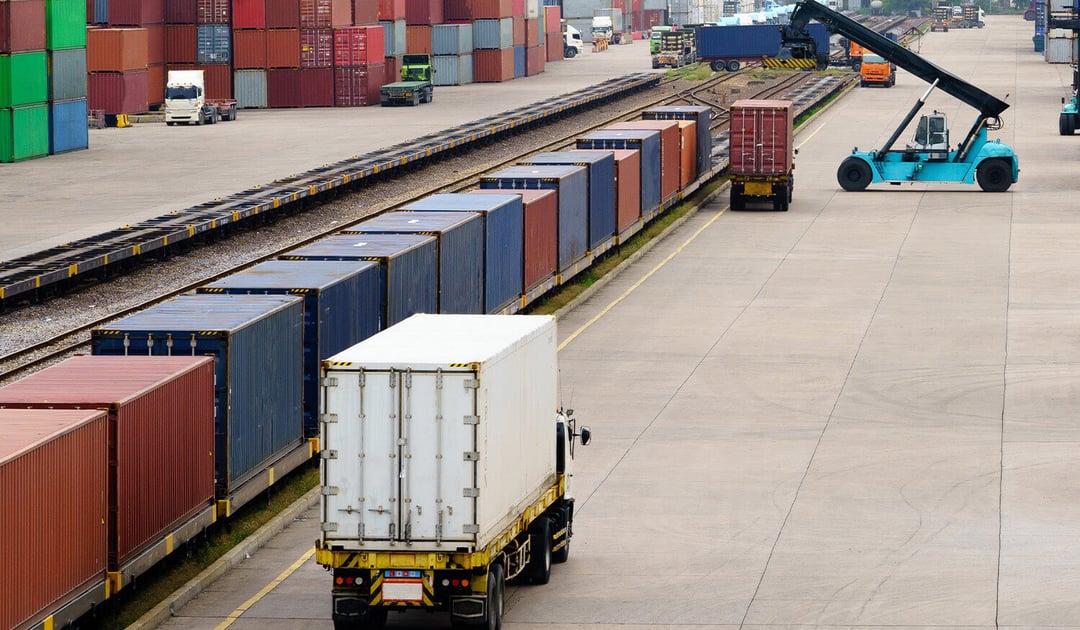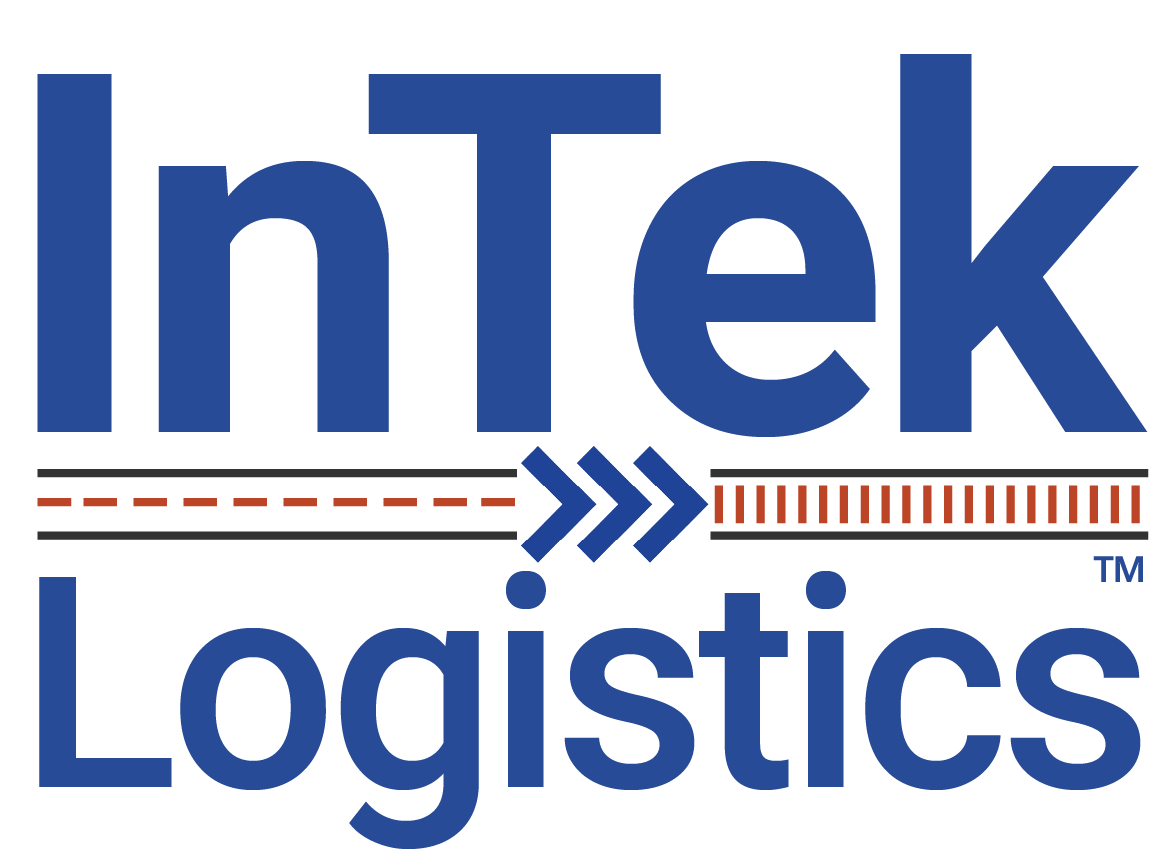
The logistics landscape is constantly evolving, and optimizing costs remains a top priority for shippers across industries. When comparing intermodal and truckload shipping, there is often a misconception that intermodal is an inferior option, which is why it's often cheaper.
In reality, intermodal can be the best service choice in many scenarios due to its efficiency, scalability, and sustainability. Yet it's still often less expensive due to the unique way intermodal is operated—leveraging both rail and truck to maximize cost savings over long distances. Understanding these cost dynamics is critical to making informed decisions.
Read on to explore the key differences in cost structures between these two modes of transportation, see scenarios where intermodal offers cost advantages, and gain insights to help shippers choose the right mode for their freight.
Understanding the Basics of Intermodal and Truckload Shipping
What is Intermodal Shipping?
Intermodal shipping combines multiple modes of transportation, typically rail and truck, to move freight. Cargo remains sealed in the same intermodal container throughout its journey as the container transfers between truck and rail freight modes via cranes and chassis. Intermodal is especially suited for long-haul shipments and offers a cost-effective solution for shippers looking to optimize their supply chain.
What is Truckload Shipping?
Truckload shipping involves transporting goods on a single truck from origin to destination. It is widely used for short-haul and time-sensitive shipments, offering the advantage of door-to-door service without the need for transfers. Truckload shipping is ideal for shipments that require speed and minimal handling.
Key Cost Factors in Intermodal and Truckload Shipping
Transportation Costs
- Intermodal shipping is generally more cost-efficient over long distances because rail transportation is significantly more fuel-efficient (and capacity efficient) than trucks. Lower fuel consumption and that larger-scale movement translates to reduced transportation costs for intermodal freight.
Labor Costs
- Truckload shipping often incurs higher labor costs due to long-haul driver wages and labor-intensive requirements. In contrast, intermodal relies on rail, which requires fewer crew members to transport large volumes of freight.
Equipment and Maintenance Costs
- Intermodal shipping uses standardized containers, which are less expensive to maintain than full truckload trailers. Additionally, rail equipment has a longer lifespan compared to trucks, contributing to cost savings.
Economies of Scale
- The economics of moving hundreds of containers on a single train offers economies of scale that are unmatched to the single-driver, single-load found model of long-haul truckload shipping.
Accessorial Charges
- Accessorial charges for long-haul freight movements are similar with both truckload and intermodal. Truckload shipping often includes additional charges such as detention and layover fees because a truck shipping long distances is more exposed to highway traffic delays and weather issues.
On the other hand, intermodal transportation, while not without accessorial fees, tends to have fewer unexpected costs due to its structured pricing models and short drayage segments that limit over-the-road traffic delays.
Scenarios Where Intermodal Offers Cost Advantages
Long-Haul Freight Over 700 Miles
- For shipments traveling over 700 miles, intermodal shipping becomes significantly more cost-effective than truckload due to rail’s fuel efficiency and lower per-mile costs.
High Fuel Price Environments
- During periods of high fuel prices, intermodal’s reliance on rail can provide substantial cost savings. Rail transportation uses less fuel per ton-mile compared to trucks, offering shippers a cost advantage.
Large Volume or High-Capacity Shipments
- Intermodal shipping is ideal for shippers moving bulk freight or requiring high freight capacity solutions. The ability to move large quantities efficiently reduces the overall cost per unit and gives shippers greater flexibility in peak freight demand scenarios.
Tight Truckload Capacity Markets
- Under market capacity shortages or seasonal demand spikes, truckload rates are at their highest. Intermodal offers a stable, cost-effective alternative.
Scenarios Where Truckload May Be More Cost-Effective
Short-Haul or Regional Freight
- For distances under 500 miles, the cost and time required for intermodal drayage and rail coordination may outweigh the savings from using rail. Truckload shipping is often more efficient for shorter hauls - though that is not always the case.
Time-Sensitive Freight
- Truckload shipping’s faster transit times make it the preferred option for freight that must reach its destination quickly, even if it comes at a higher cost.
Hidden Savings of Intermodal Transportation
Reduced Carbon Footprint
- Intermodal shipping can help shippers achieve sustainability goals by reducing greenhouse gas emissions. These savings may also help companies avoid potential carbon taxes and meet environmental compliance standards.
Fewer Truck Capacity Shortages
- The trucking industry’s ongoing driver shortage driven by high turnover has led to higher costs and capacity constraints when the freight market tightens. Intermodal’s reliance on rail reduces dependence on long-haul truck drivers, stabilizing costs.
Predictable Pricing
- Long-term contracts in intermodal shipping can shield shippers from market volatility, offering consistent and predictable pricing. The best pricing option for shielding shippers is an MCP, mutual commitment pricing program.
How to Determine the Right Mode for Your Freight
Assessing Total Cost of Ownership
- Factor in all associated costs, including accessorial charges, transit times, and fuel surcharges, to determine the true cost of each mode.
Understanding Your Supply Chain Needs
- Evaluate your priorities, such as cost savings, speed, and flexibility to identify the mode that best aligns with your business goals.
Tools and Resources
- Use intermodal cost calculators or consult with a logistics expert to assess the feasibility and cost-effectiveness of intermodal transportation for your specific needs.
Intermodal vs. Truckload Pricing
Intermodal and truckload shipping each have their advantages, but intermodal offers distinct cost benefits in the right scenarios. From long-haul freight to high fuel price environments, intermodal transportation provides shippers with a cost-effective, sustainable alternative to traditional truckload shipping.
If you’re looking to optimize your intermodal shipping strategy, consider the advantages of working with a non-asset IMC like InTek Intermodal Logistics.
Our team is here to guide you through the benefits and help you make the best choice for your logistics needs. We'll work with you on flexible solutions that fit you best. For more information about InTek, or logistics and supply chain issues in general, check out our Freight Guides.
Get Updates
Featured Articles
Categories
- Freight & Shipping Costs (56)
- Freight Broker (67)
- Freight Forwarder (3)
- Intermodal Transportation (197)
- International & Cross Border Logistics (43)
- Logistics & Supply Chain (438)
- Logistics Service Provider (80)
- LTL (39)
- Managed TMS (50)
- News (42)
- Supply Chain Sustainability (12)
- Transportation Management System (38)
- Truckload (124)
- Warehousing & Distribution (52)



